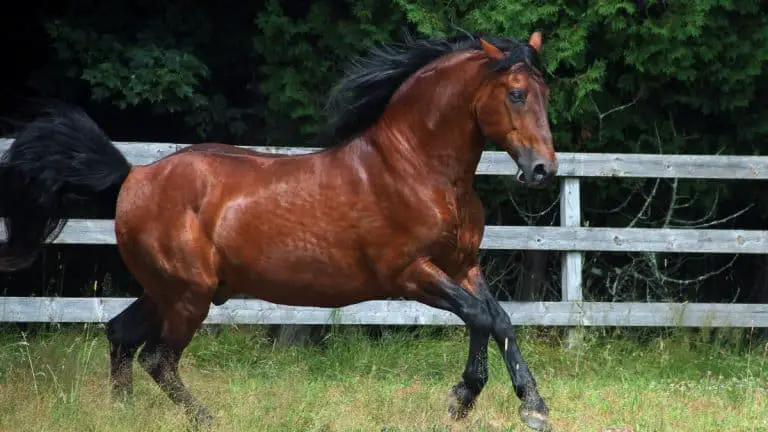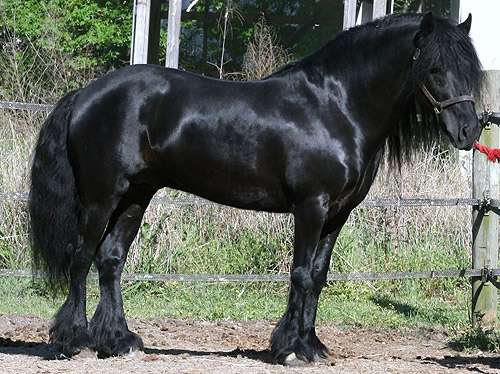
Size
The Friesian is typically 15.3 hands (63 inches, 160 cm) at the withers, but can be as short as 14.2 hands (58 inches, 147 cm) or as tall as 17 hands (68 inches, 173 cm). Mares or geldings must be at least 15.2 hands (62 inches, 157 cm) to be eligible for a “star-designation” pedigree.
Physical Attributes
They feature low-set tails, robust, sloping hindquarters, compact, muscular bodies, and powerful shoulders. Their limbs are robust and rather short. Additionally, a Friesian horse has “feather”—length, silky hair on the lower legs that is purposefully left untrimmed—and long, thick mane and rear that are frequently wavy.
Colors
Only white or, quite rarely, chestnut are available in friesian horses. If you want to buy a registered purebred Friesian horse, black may be your only real colour option, but if you are prepared to look at crossbreeds, the colour options are virtually limitless.

History and Origin
The only horse breed with roots in the Netherlands is the Friesian, which has been around since the 13th century.
The Friesian breed was developed in the Dutch province of Friesland, where they were used as work and war horses in the Middle Ages.
Temperament
The Friesian, a warm-blooded breed, is intelligent, eager to learn, active, and calm. Since they are easy to teach and ideal for a variety of riders, they are great for competitions like dressage because they do not spook easily and have a strong desire to please.
Care
The Friesian horse is no different from other horses in need of intensive care. Always be sure to feed them a healthy diet, give them enough exercise, and maintain regular veterinary care. Additionally, Friesian horses’ stalls need to be cleaned out every morning and evening.
Table





